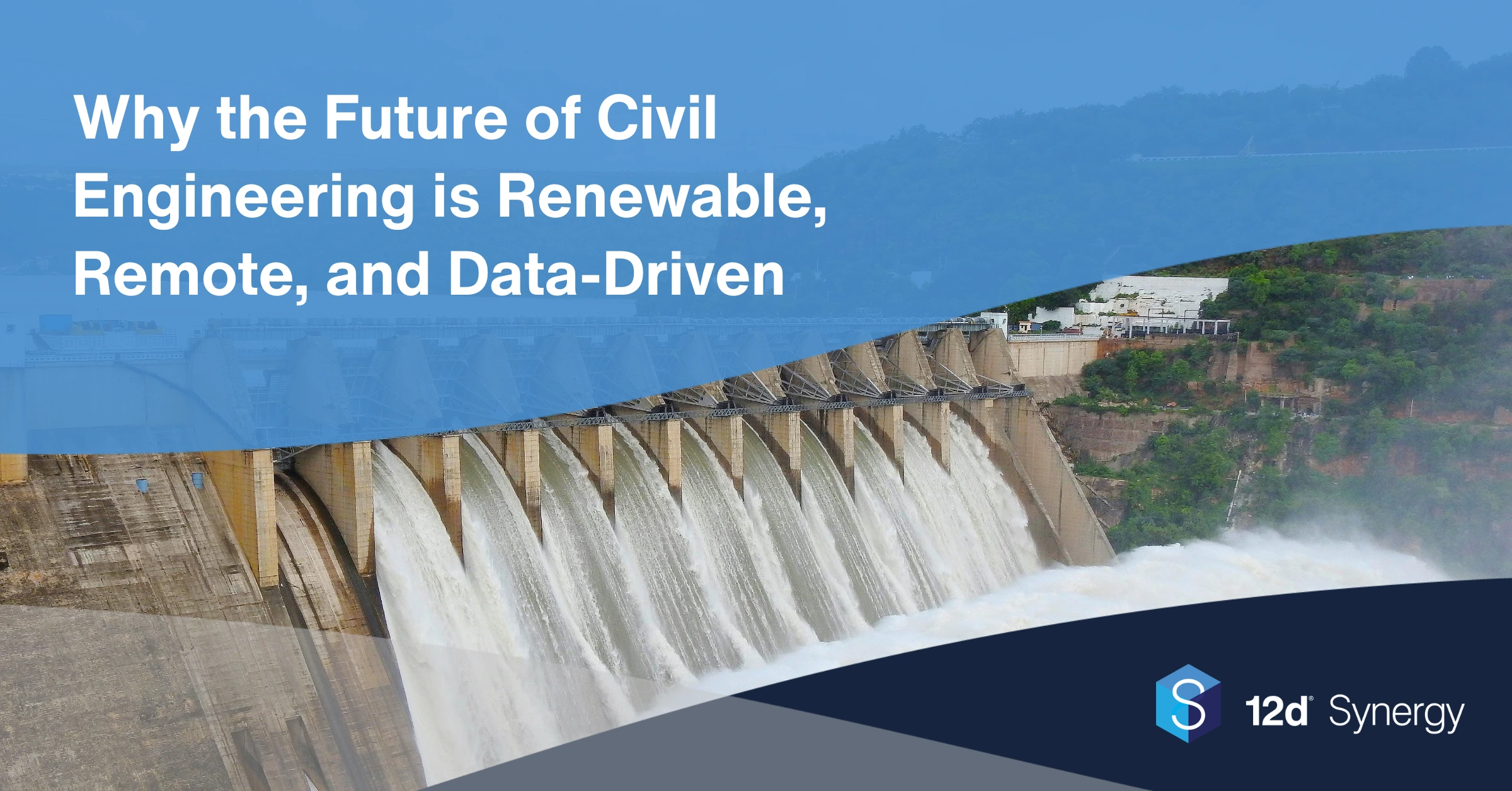Why the Future of Civil Engineering Is Renewable, Remote, and Data-Driven

The future of engineering isn’t just paved in asphalt; it’s powered by water, wind, and data.
In a recent conversation with Andrew (Drew) Shaw, Senior Technical Officer at Entura, and Joel Gregory, CEO of 12d Synergy, we were given a firsthand look at the evolving world of civil engineering and infrastructure through the lens of renewable energy, digital transformation, and smart data practices.
Here are the key takeaways from that conversation, packed with practical insight for anyone in the AEC industry, whether you’re planning your next career move, managing infrastructure upgrades, or steering a business through digital transformation.
1. Career Growth Lies in Renewable Infrastructure
Drew Shaw’s three-decade journey from highway projects in Cape York and Sydney to major hydropower initiatives in Tasmania shows how engineers can evolve with the industry. His transition from traditional civil projects to working in renewables reflects a growing shift in the sector.
“As you age, you’d like to try different things and I’ve liked the challenge of learning a new sector,” Shaw says. “There’s a lot of transferable skill from transport into renewables.”
With Australia pushing toward a net-zero future and closing fossil fuel plants, infrastructure tied to renewable energy such as hydropower, battery storage, and transmission is booming. This creates new demand for civil engineers, designers, and project managers with cross-disciplinary experience.
2. Big Projects, Bigger Collaboration
Working on WestConnex and later Tarraleah Power Station, Shaw has seen firsthand how project complexity demands tighter coordination between disciplines.
“We had 17 disciplines on WestConnex. On Tarraleah, it’s geology, civil, tunnels, electrical, dams. It’s huge. If you don’t collaborate properly, it falls apart.”
Projects like these require seamless workflows, shared data environments, and strong systems thinking. Multidisciplinary collaboration is now the rule, not the exception.
3. Data Management Is Now a Strategic Advantage
Renewables are complex. Each asset, whether a dam, power station, or tunnel, needs to be understood, monitored, and maintained with precision. This is where ISO 19650 and 12d Synergy come in.
“We had to get to a single source of truth. 12d Synergy helps us organise our data better and structure our digital assets for long-term use,” says Shaw.
As infrastructure assets age, or expand into digital twins and predictive maintenance, good data hygiene becomes critical. Civil teams must think beyond delivery to lifecycle data, integrating information from design through operation.
4. Civil Engineers Are Key to Solving the Climate Crisis
Entura’s role in Hydro Tasmania’s push for 200% renewables includes massive infrastructure undertakings from battery storage in South Australia to pumped hydro systems like Tarraleah and Lake King William.
“Hydro Tasmania is investing billions into new and upgraded renewable assets. Civil engineers are right at the centre of this transformation.”
This is not just about jobs but about the impact. Engineers working in renewables are directly contributing to Australia’s clean energy transition, helping replace coal-fired power with hydropower and storage solutions that stabilise the grid.
5. Tasmania Offers a Lifestyle and Career Advantage
With offices across Australia and the globe, Entura is headquartered in Tasmania, a state already powered by renewables.
“I could be on a mountain bike trail at lunch and back into a design model in the afternoon. The lifestyle is unbeatable,” Shaw adds.
As demand grows for specialised engineering talent, companies like Entura are offering not just challenging work but flexible, fulfilling environments. For professionals tired of city stress, regional opportunities are becoming increasingly attractive.
6. The Rise of the ‘Digital Civil Engineer’
Digital engineering, federated models, sensor data, satellite imagery, and even digital twins are no longer futuristic concepts. They’re already reshaping how engineering is done at Entura.
“The goal is smarter decisions: understanding asset performance, environmental impact, and when upgrades are needed, all based on good data,” Shaw explains.
Engineers today must be fluent in both physical and digital environments. Those who embrace this duality will be best placed to lead the projects of tomorrow.
The future of civil engineering lies at the intersection of sustainability, technology, and people.
Entura’s story is more than just a tale of hydropower. It’s a playbook for how the AEC industry can adapt, evolve, and thrive in the age of renewables. Whether you’re a graduate considering your first role, or a seasoned professional looking for purpose-driven work, one thing is clear: Engineering the future means building smarter, greener, and together.
Want more insights like this?
Explore the latest stories and innovations shaping Australia’s AEC industry.
